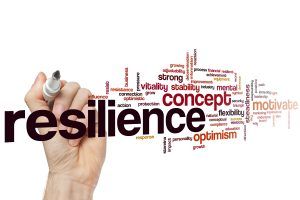- Changing Brain, Changing Lives
The brain and body interact in response to what we do, feel, and think. This is an automatic process of which we are largely and happily unaware under normal circumstances.
However, when things go awry, the body and mind communicate this to us through pain, movement or mental challenges, and other forms of distress that come to awareness. Reading and responding to the language of these messages can be the key to being well and feeling your best at any age and in any circumstance. This can at first seem daunting and overwhelming, but there are ways to improve our ability in this realm.
Here, yoga and movement serve as a somatic exploration, a holistic approach that can deepen how we access and work through our neuromuscular system to create a foundation of flexibility and movement health. You can change at the source, your brain, and feel the body follow along. Unlike traditional stretching, somatic movement reprograms dysfunctional patterns. It is about neuroplasticity, changing how our brain communicates with our body.
Dynamic Flexibility: Beyond Static Stretching
A somatic approach to movement fosters functional flexibility. It is not just about lengthening muscles; it is about making them responsive. Imagine moving through life easily, whether reaching for a high shelf, playing your favorite sport, enjoying your travels, spending time with your grandchildren, or chasing a playful dog.
Dynamic Strength: Moving With Grace and Ease
Every movement in the body is a complex interaction of muscles acting and moving in patterns. The foundation of movement function, strength, and balance is how well the body organizes and optimizes movement. Utilizing awareness in movement through simple somatic principles can empower us to access and build upon our innate abilities to move and feel our best in all we do.
Practical Steps
Enter Somatic Learning Mode (Mindful Sense Awareness): Enter the felt experience of moving your body in a judgment-free and responsive way.
Explore Mindfully: Engage in gentle, exploratory movements. Quality matters more than quantity.
Let Go of “No Pain, No Gain”: Recognize pain as your body's message to avoid struggle and strain in your movements.
Enjoy Pleasure in Motion: Be aware of and release hidden tension in movement to recover lost, healthy mobility.
Enjoy the Mind-Body Connection: This way of moving and being in your body often improves overall stress relief, mental ease, and well-being.
Embrace Embodied Intelligence: Yoga is not a checklist; it is an embodied experience. Let your body guide you.
Seek Guidance: This foundational movement approach is very different from traditional yoga or other exercise systems. It invokes specific principles of how the body and brain learn and integrate that learning. Consider consulting somatic-oriented yoga and movement practitioners to help you integrate somatic elements into your yoga practice.
Conclusion: Thriving at the Edge
As we step into increased activity levels, let us honor our bodies. Let every pose be an invitation to listen, learn, and evolve. The edge is not a precipice; it is a place of growth.
Remember, we are not fragile but resilient beings ready to thrive. Keep on keeping on, mindfully.
Disclaimer
This information is for educational purposes only. Please remember that when practicing yoga, movement, and/or meditation techniques, you accept responsibility for all you do. It is not a treatment or substitute for medical care. Consult your doctor or mental health professional and work in accordance with your medical needs and limitations. I encourage you to seek out instruction and guidance from a qualified teacher to answer any questions and ensure the most positive experience.. Please read our disclaimer for more information.

